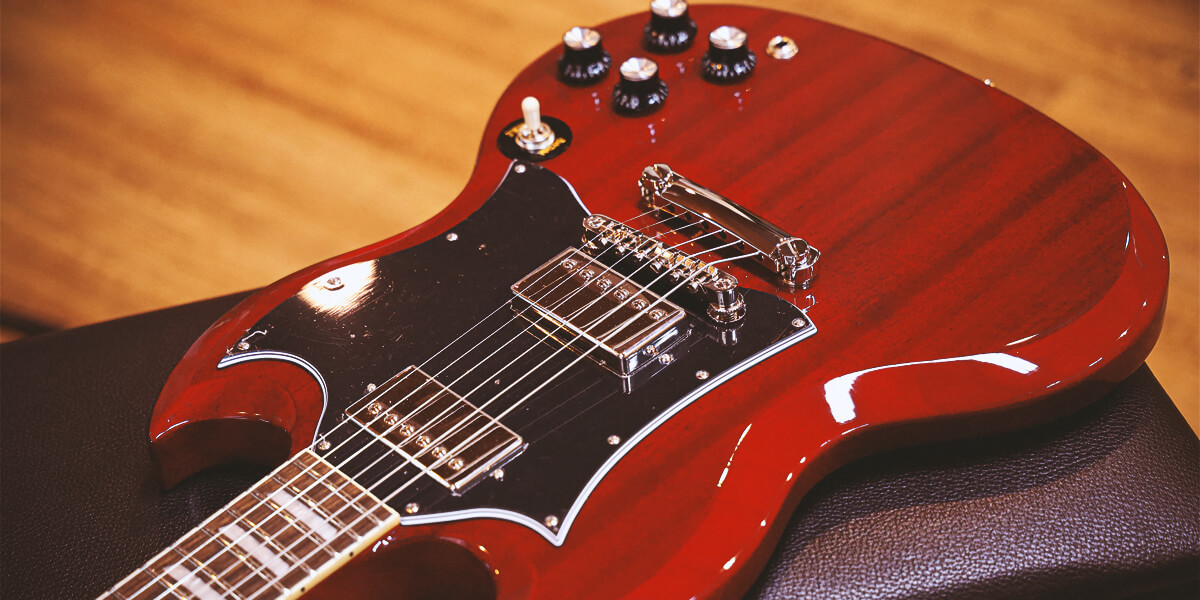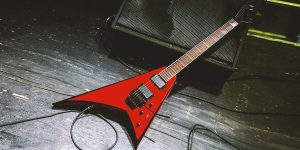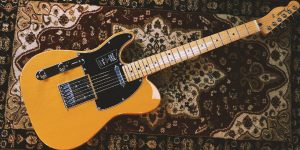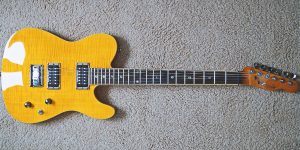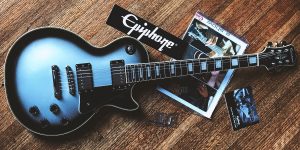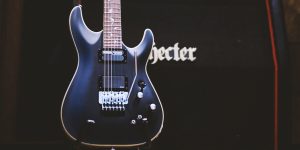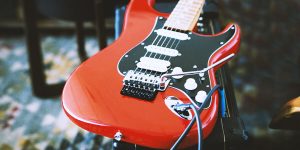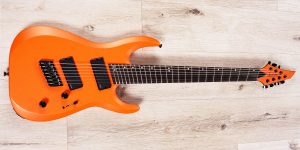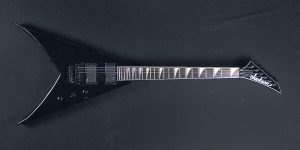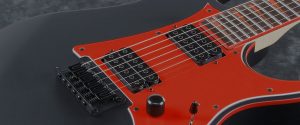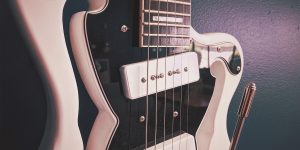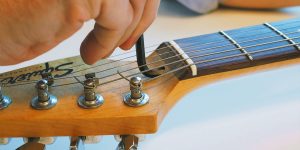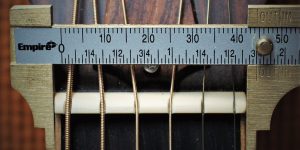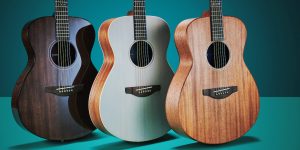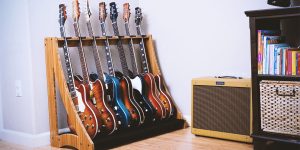Epiphone SG Standard review is, of course, about the guitar, which represents an affordable alternative to the Gibson SG. It differs in the usage of less expensive and not as high-end materials and electronics as the original. Nevertheless, it will suit connoisseurs of Gibson, who, for some reason, cannot afford to buy it. But is it worth spending huge sums on an instrument if you are not going to perform at the most famous music venues in the world and there is an affordable alternative? Let’s see together what this model has to offer us.
Body
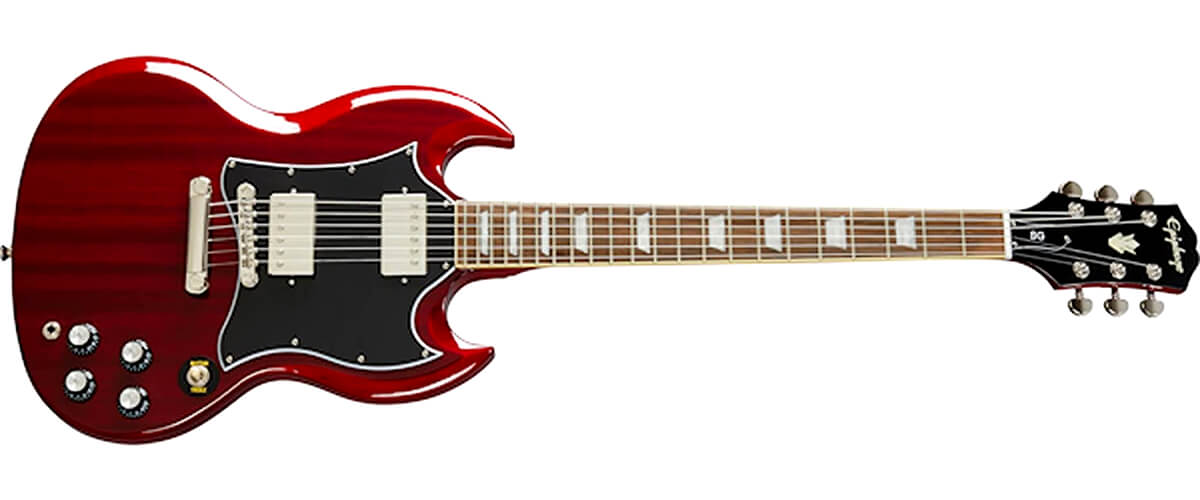
I try to choose a black color for testing, that’s my taste. And this time, I got lucky. But the model comes in three variants: Heritage Cherry, Alpine White, and Ebony. The shape of the guitar made of solid Mahogany is called SG, and it has two cutaways, which reminds Batman’s sign. Actually, the 5-Ply, Black Pickguard has the name “bat wing”. With the glossy finish and the brass-colored hardware, the guitar looks great; I would say it looks much more expensive than it is. You can naturally see differences from the original Gibson SG on close inspection. For example, Gibson uses a luxurious nitrocellulose coating. But overall, the instrument retains the tradition.
There are Epiphone LockTone Tune-O-Matic Bridge, four Black Top Hats with Inserts Control Knobs, 1/4″ Output Jack, and bottom and heel Strap Buttons on the body.
Pickup system
The main difference between Epiphone SG Standard and Gibson SG is the set of humbuckers. In Gibson, they are gorgeous 490R, and in our Epiphone, they are lower quality and very inexpensive Alnico Classic PRO. But to be fair, I want to say that this guitar sounds just great for its price.
So, here are Epiphone Alnico Classic PRO Neck Pickup and Epiphone Alnico Classic PRO Bridge, which can be used together or separately with a 3-ways Epiphone toggle selector. Also notable is that each humbucker in the guitar has its own Volume and Tone CTS pots, so the adjustment is very precise and detailed.
After testing, I can say that the Epiphone SG Standard specs are very good for its level. And even though this guitar doesn’t quite match its original, the instrument itself still sounds fat and gives the distortion you would expect from an SG guitar, but more about that a little later.
Neck, fingerboard, headstock
Playability is, of course, provided by the quality of the neck. In this guitar, we have 60s SlimTaper, like in many other Epiphone models, which is attached to the body on the principle of a Glued-in; Set Neck. And not without reason, they often use it because the fingerboard is incredibly comfortable and fast. Despite the name, it’s not too thin with a 12″ radius, so a hand of any size will lay well.
The Indian Laurel fingerboard has a 24.75″ scale length and 22 Medium Jumbo frets. Trapezoid Inlays fit perfectly into the overall design image, making the guitar even more attractive, ending with the ornamentation on the updated Epiphone SG Standard headstock. Graph Tech NuBone 1.692″ width and vintage Epiphone Deluxe Tuners 18:1 ratio, which are very tunable, crowning the fingerboard.
Sound quality

Well, it remains to tell at last how the Epiphone SG Standard sounds. And to start with, it’s worth noting that SG models are designed for rock styles. So I was expecting a little bit of muddy sound on the low end and piercing high notes. And overall, the instrument didn’t disappoint me; the humbuckers produced tight lows, warm voluminous mids, and clean highs. But to be completely honest, it can’t be compared to the Gibson, which is the Queen of Rock. So let’s say, for its price, the SG Standard is simply gorgeous. Really. Excellent balance, long sustain, and clarity of the extracted sounds at a very high level is what I heard.
Key specs
- Scale, in/cm: 24.7/62.6.
- Frets: 22.
- Fretboard radius, in/cm: 16/40.6.
- Type: electric.
- Body material: mahogany.
- Neck material: indian laurel.
- Neck joint: bolt-on.

